The name ‘battleship’ comes from ‘line-of-battle ship’, the name given to the large ships of the Napoleonic Wars that fought in a line. It refers to a capital ship (the term for large warships which are responsible for sea control) with big guns as its primary armament and carrying heavy armor. Battleships in various forms dominated the seas from the 1860s (when the first armored warships appeared) until WW2, when aircraft developed enough to dethroned them. There are no battleships in service today, and the only battleships to see active service since 1960 are the Iowa class.
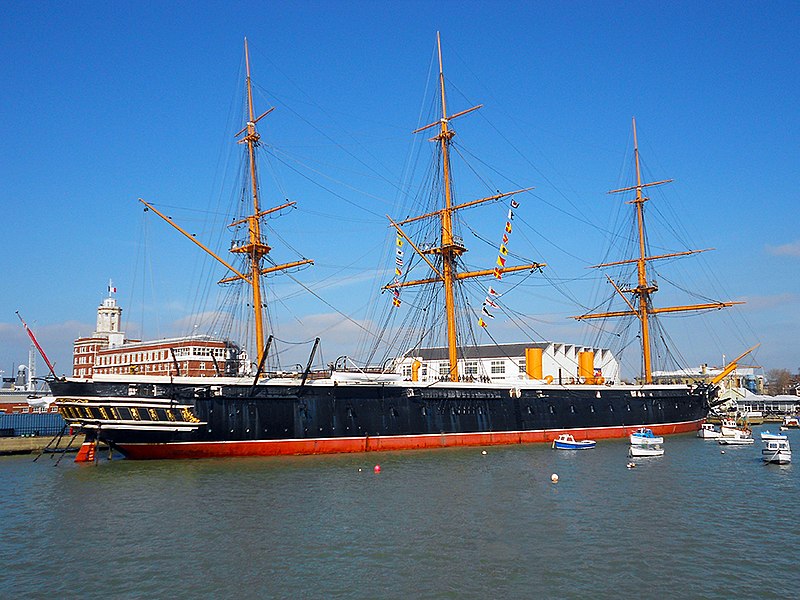
HMS Warrior (preserved at Portsmouth, England)
The lineage of the modern battleship starts with HMS Warrior, launched in 1860, the first iron-hulled armored warship. She was followed by a bewildering array of other ships. Turrets appeared, and improvements in steam engines allowed sails to be discarded.

HMS Revenge, of the Royal Sovereign class
The next really notable ship was the British Royal Sovereign class, the first pre-dreadnoughts (although they didn't call them that at the time), built starting in 1889. These ended a long period of one-off designs, ushering in an era of design stability just as tensions increased worldwide and navies began building armored warships in huge numbers. The Royal Sovereigns had 4 large guns in two mounts, and a number of 6" guns that could use their high rate of fire to smash unprotected sections of enemy ships. They were also fast and good seaboats. This pattern was widely copied, both in the UK and overseas.
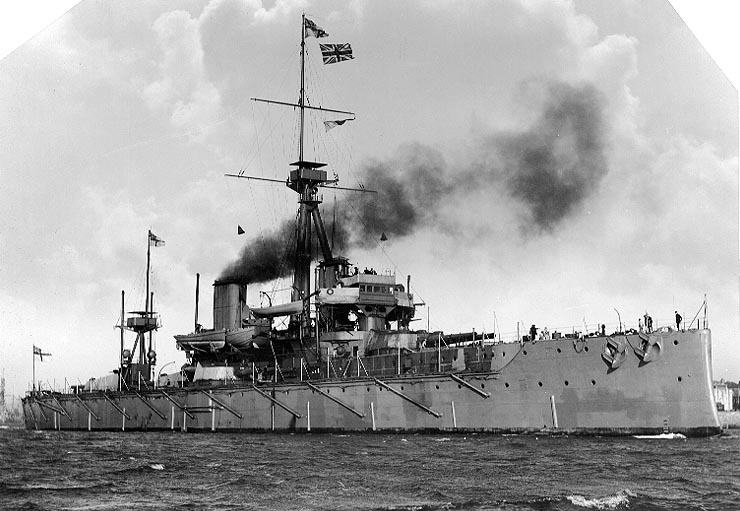
HMS Dreadnought
Advances in fire control over the 15 years following the Royal Sovereigns changed the balance between large and small guns. In 1906, the British commissioned HMS Dreadnought, a ship armed only with 10 12" guns for fighting other battleships (although she still carried secondary weapons for defense against smaller vessels.) Dreadnought was also the first battleship with steam turbines, and gave her name to the all-big-gun ships that followed her.
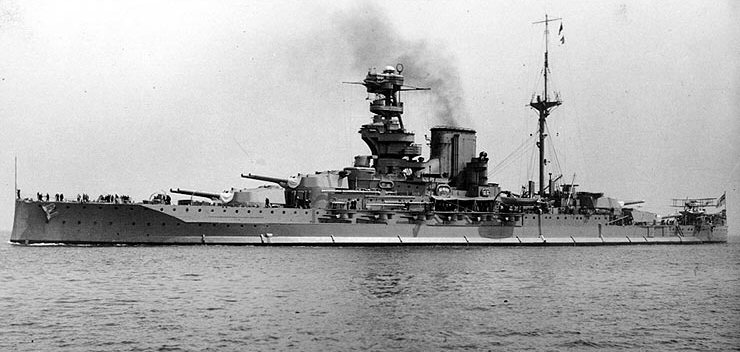
HMS Valiant, of the Queen Elizabeth class
Over the next decade, battleships grew and proliferated. In 1914, the British had 24 dreadnoughts and 10 battlecruisers (fast, lightly-armored versions of battleships) in commission, while the Germans had 17 and 5, respectively. The most modern ships of the era were the Queen Elizabeth class. They had 8 15" guns and were 50% larger than Dreadnought by weight.
These ships spent most of the war staring at each other across the North Sea. The two fleets met in combat only once, at the Battle of Jutland, tactically indecisive but a strategic victory for the British. The relative lack of activity concealed an important purpose. The British blockade of Germany, made possible by their superiority at sea, was critical to the eventual collapse of the German war effort.
After the war, a new arms race, similar to the one that had occurred pre-war between Britain and Germany, appeared to be shaping up, so the Washington Naval Treaty was signed between the major maritime powers in 1922, preventing new battleship construction for 10 years, subsequently extended to 1937. Restrictions were also placed on battleship size, and the ships built in accordance with the treaty were known as Treaty Battleships.
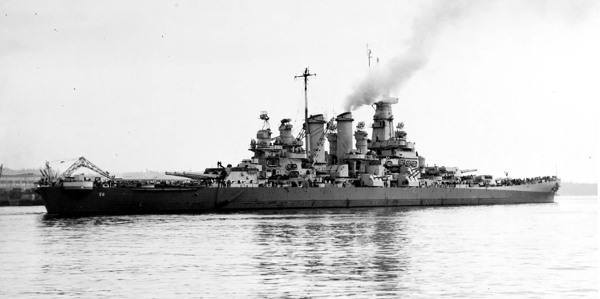
USS Washington, of the North Carolina class
All of the major naval powers built treaty battleships, with the exception of Japan. The US North Carolina class were fairly typical of the breed, 35,000 tons standard, with 9 16" guns, and about 30% faster than Dreadnought had been. Bismarck was another example, although she was significantly heavier (and more capable) than she should have been under the treaty.
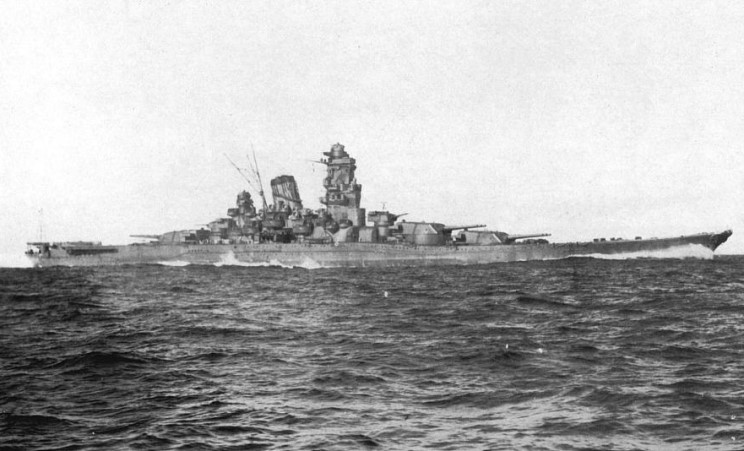
Yamato
The Japanese pulled out of the treaty system in 1936, and instead built the two ships of the Yamato class, the largest (65,000 tons) and most heavily armed battleships ever. They had 9 18" guns, and armor that was 16" thick. Unfortunately, the rise of air power meant that neither ship saw action against other battleships, and both were sunk by air attack.
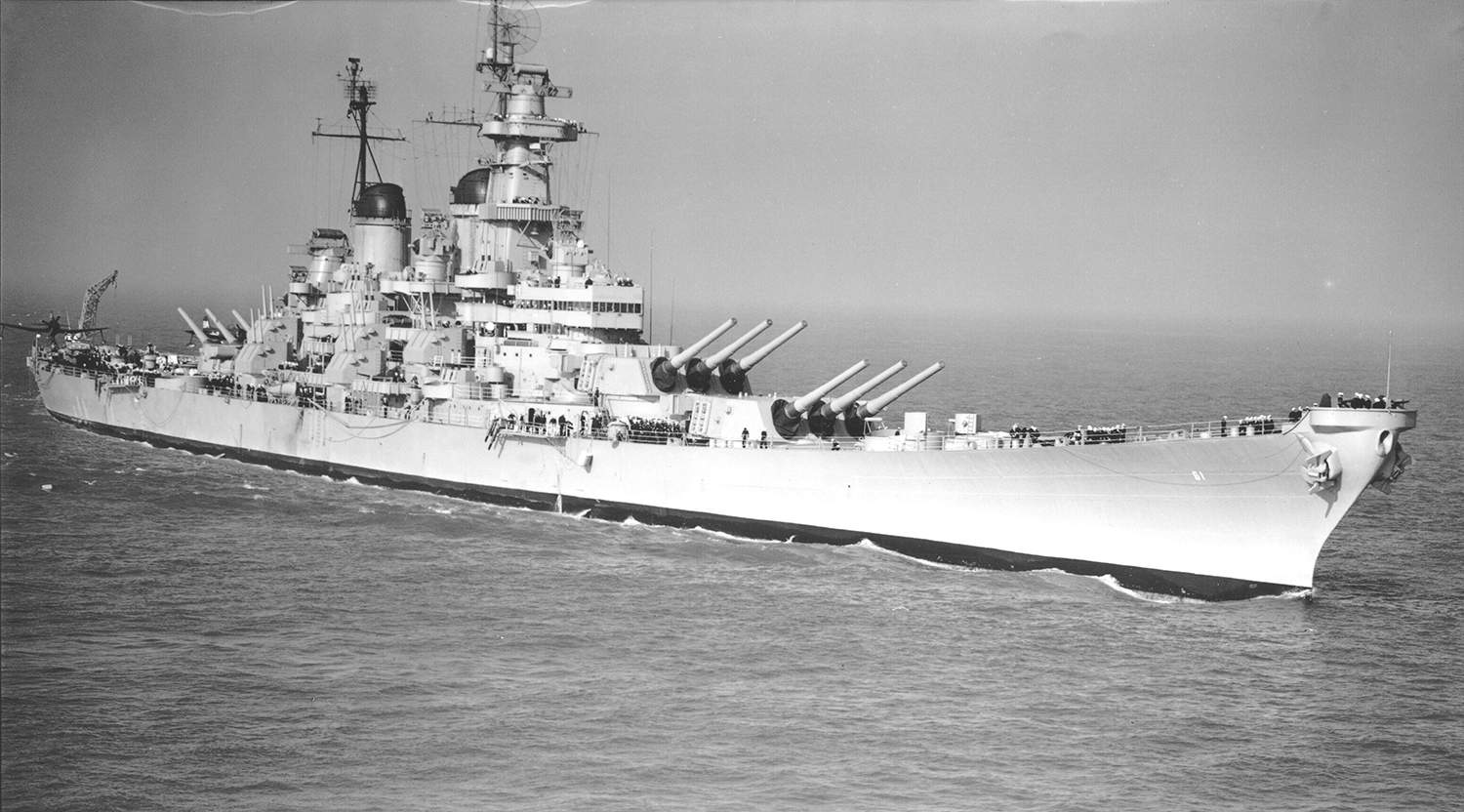
USS Iowa
The treaty contained an escalator clause, which allowed the signatories to build ships up to 45,000 tons if the Japanese refused to sign. The press of war meant that only the US had time to actually complete ships under this clause, which became the Iowa class. These were fast and armed with 9 improved 16" guns. They were well-liked in the Pacific, although they never got to fight a battleship-on-battleship action.
During WWII, battleships served in a number of roles, ranging from a handful of big-gun actions to screening carriers from air and surface attack. The major naval battles of the war were generally fought by carrier aircraft, but battleships proved their utility a number of times, including providing insurance against an unexpected encounter with enemy surface ships. The last clash of big-gun ships came in October 1944, when a group of Pearl Harbor veterans stopped a Japanese surface group at Suriago Strait. After the end of the war, shrinking defense budgets and the increased utility of air power meant that the battleship was essentially doomed. The British retired theirs quickly, while the US held on to the Iowas through the late 50s, using them off Korea for shore bombardment. But in 1958, the last two were sent to reserve, and it looked as though the battleship was gone forever.
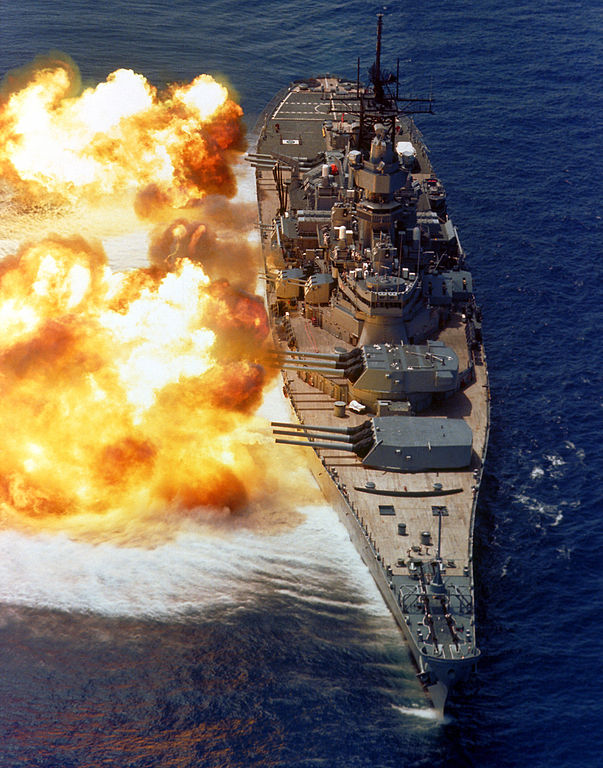
USS Iowa firing a broadside in the 1980s
Fortunately, this wasn't the case. The USS New Jersey was activated in 1968 to provide fire support off of Vietnam, her one cruise there proving extremely effective before her subsequent return to the reserves. In 1980, as part of his 600-ship navy, President Reagan ordered all four reactivated. They served from 1982 to 1992, providing heavy firepower with both guns and newly-installed cruise missiles off of Lebanon and in the Persian Gulf. Today, all four are museums.
A Brief Introduction to the USS Iowa:
I talk a lot about Iowa, as she's my ship, even after I moved away. Often the principles under discussion are best illustrated with concrete examples, and those examples are usually drawn from her. I thought I'd give a brief sketch of the ship as a background to those examples.
The USS Iowa is 887 ft. 3 in long, 108 ft. 2 in wide, and has a loaded draft (depth) of around 37 ft. Her hull number is BB-61, BB meaning that she’s a battleship and 61 being her number in the sequence of battleships authorized for the US Navy.1 She weighs about 57,000 long tons fully loaded,2 which is particularly impressive given her top speed of 33 knots,3 provided by her 212,000 horsepower engines. The armor belt (on the sides of the ship) is 12.1” and the main armor deck is 6”. The design crew was 2100 men, but it rose as high as 2800 during WW2, and dropped to about 1500 during the 80s.
Iowa is armed with nine 16” guns in three main turrets, and initially had twenty 5” secondary guns in ten twin mounts for shooting at smaller ships and airplanes. Four of these mounts were removed in the 1980s to make room for new systems.
In WWII, she bristled with light antiaircraft guns, nineteen quad 40mm Bofors and fifty-two 20mm Oerlikons. All of these were removed before she reactivated in the 80s, due to their obsolescence in the face of modern aircraft. They (and the missing 5” mounts) have been replaced with four anti-missile Close-in Weapons System (CIWS) mounts, eight 4-round Armored Box Launchers for Tomahawk cruise missiles, and four quad launchers for Harpoon anti-ship missiles.
Today, she's a museum ship in the Port of Los Angeles, in the care of the Pacific Battleship Center. I'd highly encourage paying her a visit.
1 Not all 60 before her were built, as some were cancelled under the Washington Naval Treaty. ⇑
2 Ships are always measured in long tons, but this is ~64,000 short tons for those who don't think in naval tonnage. ⇑
3 38 mph ⇑
4 My photo. ⇑

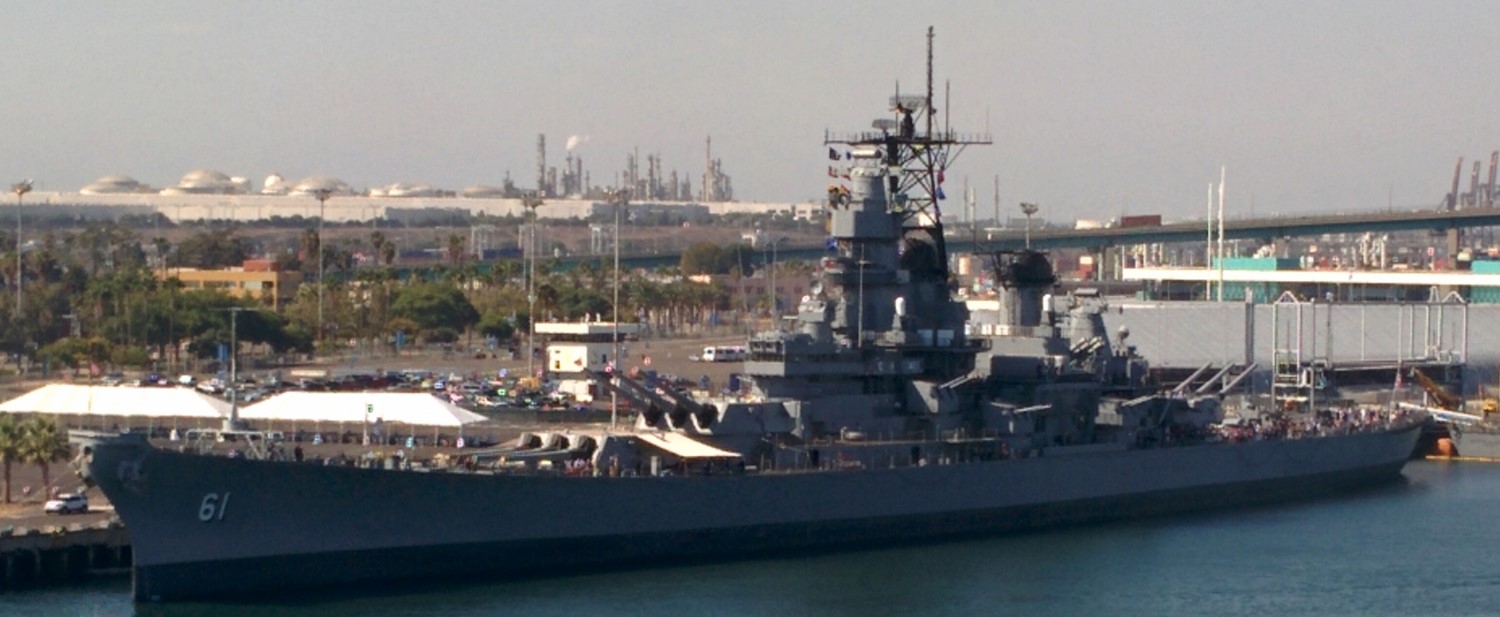
Comments
test
Cool. It works.
A thing I'm curious about: how well did the concept of "zone of immunity" play out in practice?
@Evil4Zerggin It's actually kind of hard to tell, due to the relatively small number of immune zone-designed ships that took hits from heavy gunfire. South Dakota at Guadalcanal, PoW vs Bismarck, maybe Jean Bart at Casablanca, Scharnhorst at North Cape and some of the Italian BBs in the Med. (I'm not sure what the design standards for the last three were, and will have to check later.) Bismarck herself wasn't an immune zone design, at least in practice.
Where does the Monitor fit into this?
Monitor is only of interest as a participant in the first clash of ironclads. She also was an early user of turrets at sea, although Coles was working independently in England, and his turrets are the ancestors of the ones used on the dreadnoughts. In the long term, her type was a dead end, and particularly at this level, I ignored her.